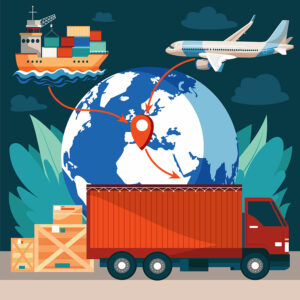On July 9, the “pause” in the imposition of higher tariffs by the United States is scheduled to expire, although US President Donald Trump just last week said that the deadline could shift. How the tariff numbers eventually shake out matters greatly for three ASEAN countries that are heavily dependent on trade and whose growth and employment outlook would suffer significantly should the US restore the original “liberation” tariff rates of April: Cambodia (49%), Vietnam (46%), and Thailand (36%).
Greater clarity on tariffs would allow companies to better plan how to reshape their supply chains. After all, changes to global production chains are still a given because of the risks that emanate from similarly unsettled US-China relations and US domestic politics. For those who work in trade-oriented sectors, a more predictable trade environment would help ease some of their fears about their jobs. Much of emerging Asia capitalized on the free flow of goods and capital; how much of that model will persist through the next generation is now one of the key questions for the region.
However, trade is not the only variable. Companies operating in ASEAN also have to deal with political uncertainties in their respective backyards, the outcomes of which also matter greatly for their economies.
Nowhere is this truer than in Thailand, where Prime Minister Paetongtarn Shinawatra is again under attack and may not even survive the next few weeks. Her detractors accuse her of having undermined Thai pride and sovereignty by being too acquiescent to former Cambodian leader Hun Sen, and of even having criticized her own military during a phone call on June 15 where she was trying to ease border tensions triggered by the shooting of a Cambodian soldier last May. The Constitutional Court will soon decide on whether to hear a case against her on the issue; protests were held on Saturday demanding her resignation and more are being planned; and her former ally, the Bhumjaithai party, is threatening to introduce a no-confidence motion in parliament soon.
The politics around this issue run deeper than that phone call. It is driven by the two-decade long battle between the Shinawatra family and Bangkok elites; Paetongtarn’s miscue just gave her opponents an opening to again strike at the family. Thailand’s growth outlook is already weak and the government’s headline stimulus program — a cash handout to spur consumption — has sputtered because many consumers opted to pay down their debts with the money, rather than spending it. Thai politics is fragmented, and the underlying social tensions that drive it are difficult to resolve. Dark clouds loom on the horizon for Thailand.
Vietnam is better off politically. Politics are so far consolidated around Communist Party of Vietnam (CPV) General Secretary To Lam, who is expected to be reelected early next year as the country’s top leader during the CPV’s quinquennial party congress.
No CPV succession is ever fully assured, but the signals so far are that there is no strong challenge to the incumbent. Vietnam has its own uncertainties, however, generated not only by the trade war but by Lam’s initiatives to pursue the most significant restructuring of the political system in decades.
Earlier this year, Vietnam slashed the number of cabinet-level ministries and top-level agencies from 30 to 22, in the process merging several important economic portfolios. Fully implemented, it could cut the number of public sector workers, which is estimated at around 2 million, by 20% over the next five years. The goal is to reallocate more funds from running the government to medium term development projects and to reduce overlaps in the bureaucracy that are often the source of complaints from businesses and investors.
Also, only a few months ago, parliament also approved a plan to consolidate its provinces from 63 to 34 this June, and to flatten the administrative system for local governments by removing the middle tier known as districts, also to reduce unwieldy and redundant systems. Seeing these changes through is already a daunting political challenge under any circumstance. Attempting it while undergoing a leadership transition and with the overhang of uncertainty around global trade is a high-wire act. However, if Vietnam emerges with a more manageable set of tariff rates and with minimal social disruption from its political reforms, then a second Lam term and some stability for Vietnam’s economic outlook are in the cards.
The Philippines has been spared the worst of US tariffs, and in fact sees some opportunities from the reshaping of supply chains — assuming, of course, that it can resolve many of the issues that have historically deterred investors, regardless of administration. However, the primary focus will in the next few months be on the trajectory of the political battle between the country’s two most prominent families, the Marcoses and the Dutertes. The impeachment of Vice-President Sara Duterte hangs in the air, with a possible trial starting in July, while former President Rodrigo Duterte will likely remain in The Hague for the foreseeable future, with his trial also set to start in September. How much these events will erode the Duterte family’s political clout is the main question; if the family makes it through relatively unscathed, then Sara will emerge as a strong contender for 2028. Given the polarization between the families, politics is now a zero-sum game for the two. The stronger the Dutertes get, the weaker the Marcoses become, and vice-versa. The victories of Bam Aquino and Kiko Pangilinan in the senate elections has created the narrative of how a “third force” may still be a factor in national politics, and whether the seemingly unending wrangling between the two families causes voters to reorient towards alternative politicians will be a story to watch through the next two years.
In Indonesia, October will see the first year in office of President Prabowo Subianto. When he first ran for the presidency more than a decade ago, Prabowo’s rhetoric and track record generated fears that he was a nationalist and a populist, whose authoritarian inclinations would undermine the democratic progress and economic reforms initiated by several Indonesian presidents since the post-Asian financial crisis years. Subianto tempered his message during the elections, and he has so far been more pragmatic than ideological. He continues to rail against foreign exploitation of Indonesia and still implicitly criticizes democratic processes but has so far kept much of it to rhetoric and speeches rather than actual policy.
To some extent this may be driven by the fact that Prabowo wants to keep a broad set of parties in his coalition, which limits his ability to implement disruptive policies.
There is still the risk that as he gains more control of politics that he will see these constraints as weakening, and that the true Prabowo who wants to reshape Indonesia based on his original ideas will emerge. In the meantime, his relationship with former President Joko Widodo and willingness to keep Finance Minister Sri Mulyani Indrawati in her post will be seen as key markers of his administration’s real politics.
Bob Herrera-Lim is a managing director at Teneo, a New-York based consulting firm that advises companies and investors globally. He covers all of Southeast Asia for the firm’s clients. He is also a fellow of the Foundation for Economic Freedom.

